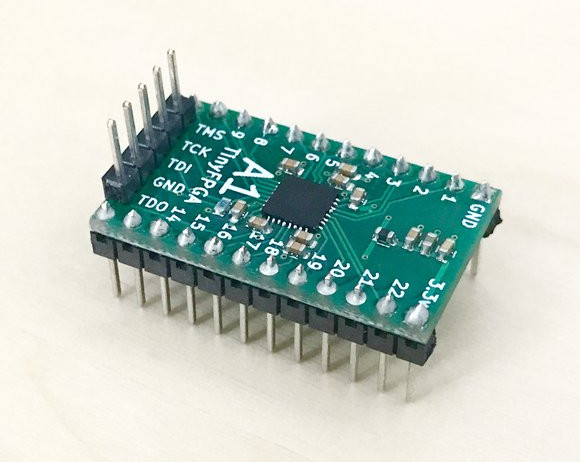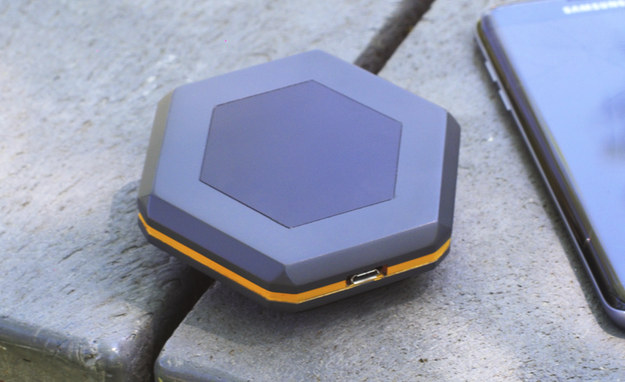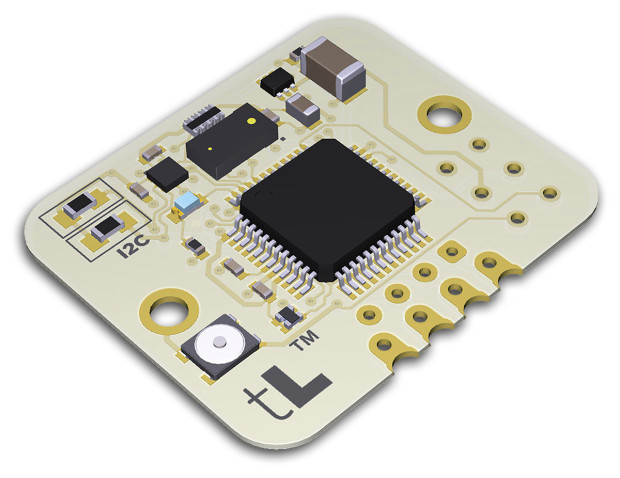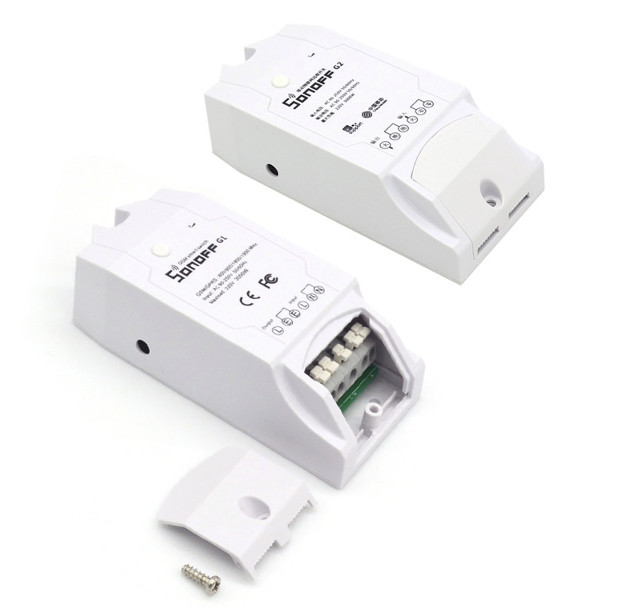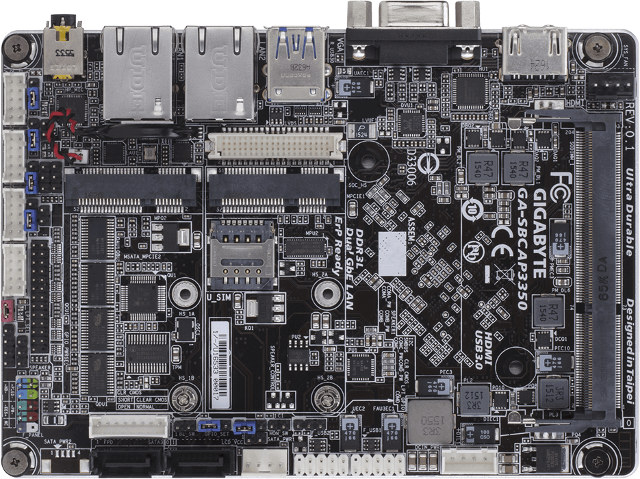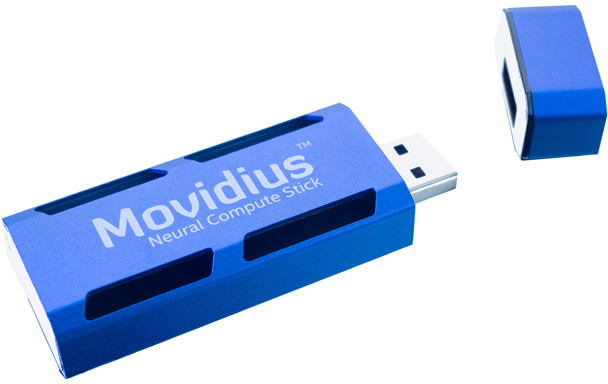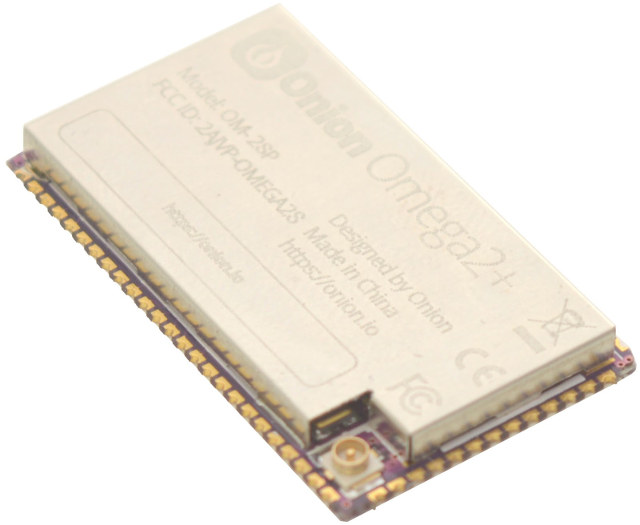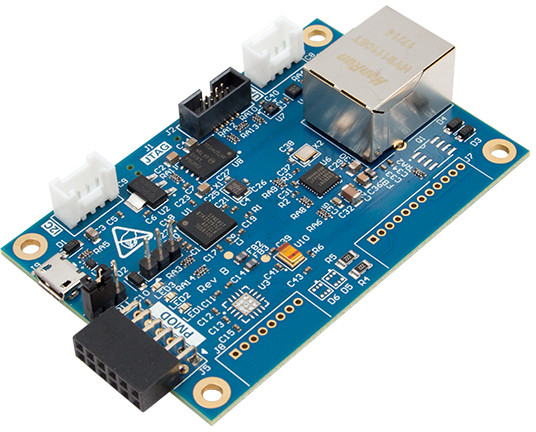We’ve covered several low cost FPGA boards over the years, but if you want a platform with the bare minimum, you may be interested in tinyFPGA breakout board based on Lattice Semi MachXO2 FPGA board that comes with two flavors: A1 with MachXO2-256, and A2 with the more powerful MachXO2-1200 FPGA. TinyFPGA board specifications: FPGA A1 board – Lattice MachXO2-256 with 256 LUTs, 2 kbits distributed RAM A2 board – Lattice MachXO2-1200 with 1280 LUTs, 10 kbits distributed RAM, 64 kbits EBR SRAM, 64 kbits flash memory, and a PLL (See datasheet for MachXO2 family) Built-in flash configuration memory programmable via JTAG I/Os 18 user IOs (21 with JTAGEN) 1x SPI Hard-IP 2x I2C Hard-IPs A2 board only – 1x PLL Hard-IP Power Supply – 3.3V Dimensions – ~3.05 x 1.8 cm You’ll need a JTAG programmer for Lattice FPGA as well as Lattice Diamond software – available for Windows […]
Sonnet is a Rugged Portable Device Creating Mesh Networks for Smartphones
Cellular networks are available in most places, but not always, and you may not have connectivity while climbing mountains or other remote locations, when going abroad, during natural disaster, in very crowded places where network capacity is exceeded, or when your government decides to cut it off for “national stability and harmony”. Wouldn’t it be great if you were still able to contact with your friend in such cases, and create your own mesh networks expanding over several kilometers? That’s exactly what Sonnet does by connecting to your smartphone over WiFi, and to other Sonnet nodes over ISM frequencies (433, 868 and 925 MHz). Sonnet hardware specifications: Connectivity 802.11 b/g/n WiFi with up to 20 dBm (max varies per country); WPA/WPA2 security Long Range RF Frequencies 915 MHz (North America) 868 MHz (Europe) 433 MHz (Asia Pacific) Distance – 5km typ.; up to 10km Line-of-sight; SMA connector available to extend […]
TinyLIDAR is a $15 LIDAR MCU Board based on STMicro VL53L0X Time-of-Flight Ranging Sensor (Crowdfunding)
LIDAR (Light Detection and Ranging) technology is used in autonomous car, drones, and some smartphones, in order to get an object position just like RADAR systems, but instead of using radio frequencies, it relies on infrared signals. High speed, long range LIDAR systems can cost several hundred dollars, but if you’d like to experiment with the technology, or your project would work just fine with 60 Hz scanning and a 2 meter range, tinyLIDAR could be a fun board to play with using Arduino compatible boards. TinyLIDAR specifications and features: LIDAR Sensor ST VL53L0X Time-of-Flight (ToF) ranging sensor 940nm laser VCSEL Up to 2 meters range Up to 60 Hz sampling rate even with Arduino UNO board Up to 3% accuracy with mm precision MCU – Unnamed dedicated 32-bit MCU (likely STM32) used to abstract the ST PAL API into simple I2C commands Host Interface – 4-pin I2C header; re-configurable […]
Sonoff G1 AC Powered Smart Power Switch Works Over 2G GSM/GPRS
Today, I’ve searched for AC powered wireless switched similar to Sonoff devices, but with ESP32 instead in order to get WiFi and Bluetooth, since the latter is better to use with a battery powered buttons. I did find a DC powered board, but no AC powered ones yet. However, as I visited ITEAD website to check if they had anything of the sort, I discovered they had a new model called Sonoff G1, similar to Sonoff TH16, but instead of using WiFi, you can use 2G GSM/GPRS to control the switch remotely. Sonoff G1 specifications: Wireless Module – ST86 quad band GSM/GPRS module GSM/GPRS connectivity GSM850, EGSM900, DCS1800 and PCS1900 MHz support GPRS multi-slot class 10, GPRS mobile station class B 1.8V, 3V SIM card slot Transmit power: Class 4 (2W): GSM850, EGSM900; Class 1 (1W): DCS1800, PCS1900 Relay – Up to 16A (3000 Watts max) Terminals – 6 terminals […]
GIGABYTE GA-SBCAP3350 Celeron N3350 Single Computer Computer Offers Upgradeable Memory and Storage
The other day I wrote about MeLE PCG35 Apo mini PC which comes with soldered RAM and eMMC flash, and one person commented about having a model with more than 4GB RAM, but I explained it would not be cost-effective to add more RAM for low cost Windows 10 mini PCs since they would not qualify for Microsoft discount, and it would significantly add to the price. So Microsoft has a big impact on this market segment, and even if you’re going to run Ubuntu or other Linux distributions, those requirements indirectly affect your choice of hardware. One solution is to buy barebone mini PC, or at least with upgradeable RAM and storage, but there aren’t that many with an Apollo Lake processor. Intel NUC6CAYS NUC or GIGABYTE GB-BPCE-3350 are options, and on the Chinese side, you could consider Voyo V1 VMac Mini. AFAIK, none of those options are fanless, […]
Intel’s Movidius Neural Compute Stick Brings Low Power Deep Learning & Artificial Intelligence Offline
Intel has released several Compute Stick over the years which can be used as tiny Windows or Linux computer connected to the HDMI port of your TV or monitor, but Movidius Neural Computer Stick is a complete different beast, as it’s a deep learning inference kit and self-contained artificial intelligence (A.I.) accelerator that connects to the USB port of computers or laptops. Intel did not provide the full hardware specifications for the kit, but we do know the following specifications: Vision Processing Unit – Intel Movidius Myriad 2 VPU with 12 VLIW 128-bit vector SHAVE processors @ 600 MHz optimized for machine vision, Configurable hardware accelerators for image and vision processing; 28nm HPC process node; up to 100 gigaflops USB 3.0 type A port Power Consumption – Low power, the SoC has a 1W power profile Dimensions – 72.5mm x 27mm x 14mm You can enter a trained Caffe, feed-forward […]
Onion Omega2S and Omega2S+ Linux WiFi Modules Launched for OEMs
Onion Omega2 and Omega2+ are tiny WiFi IoT development boards powered by Mediatek MT7688 MIPS processor running LEDE – OpenWrt fork – that sold for just $5 and up in Kickstarter, but are now selling for $7.50 and $9 respectively. The board also support various add-on boards, and a great for evaluation and various projects. But they may not be ideal for people who want to integrate the technology into their products, and that’s why the company have just launched Omega2S and Omega2S+ with about the same specifications, but in a package more suitable to be integrated into products for mass production. Onion Omega2S/2S+ specifications: WiSoC – Mediatek MT7688 MIPS processor @ 580 MHz System Memory / Storage Omega2S – 64MB DDR2 / 16MB flash Omega2S+ – 128MB DDR2 / 32 MB flash Connectivity – 802.11 b/g/n WiFi with u.FL antenna connector Baseboard Interface – Half holes (aka castellated holes) […]
Renesas S5D9 IoT Fast Prototyping Board Combines Cortex M4F MCU, Sensors, and Ethernet
Renesas S5D9 IoT Fast Prototyping board is a board designed – as its name implies – for the Internet of Things, with the company’s Synergy S5D9 ARM Cortex-M4F micro-controller, various sensors, various I/Os including protected digital inputs and outputs, and Ethernet for network connectivity instead of a Bluetooth or/and WiFi module. Renesas S5D9 board specifications: MCU – Renesas Synergy S5D9 ARM Cortex M4F MCU @120MHz with 2MB flash and 640KB SDRAM Storage – 256Mbits (32MB) QSPI NOR flash Connectivity – 1x 10/100Mbps Ethernet (RJ45) USB – 1x micro USB Full Speed port Sensors Bosch BMC150 6-Axis sensor (digital compass) AMS ENS210 environmental sensor for temperature and humidity data TE Connectivity MS5637-02BA03 barometric pressure sensor Knowles SPU0414HR5H-SB amplified SiSonic microphone Expansion 1x PMOD connector (SPI) 2x Grove Connectors (UART, I2C, GPIO) 2x Protected Digital Input (5.1V to 24V) + 2x Buffered Digital Output (up to 1A) via Molex 12 position header […]


